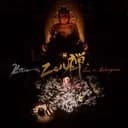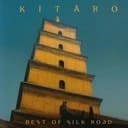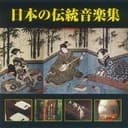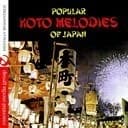Cultural Origins and Traditional Japanese Musical Heritage
The hirajoshi scale represents a foundational element of Japanese musical tradition, with historical roots extending through centuries of gagaku (court music), Buddhist ceremonial practices, and folk music traditions. The name "hirajoshi" translates to "flat tuning" or "level foundation," describing its stable, grounded character within Japan's sophisticated modal system developed over centuries. Traditional instruments including the 13-string koto, shakuhachi bamboo flute, and shamisen stringed instrument utilize hirajoshi tuning for both sacred spiritual music and secular entertainment repertoire. This pentatonic scale emerged from tuning theories developed by Japanese court musicians and Buddhist monks, incorporating principles fundamentally distinct from Western equal temperament. The interval pattern (2-1-4-1-4 semitones) creates harmonic relationships that differ dramatically from E♭ Major or E♭ Natural Minor, producing the instantly recognizable "Japanese sound" that transcends language and cultural boundaries. Modern traditional music schools throughout Japan continue teaching hirajoshi as essential repertoire, while contemporary artists adapt it for anime soundtracks, video game scores, and world music fusion projects that honor traditional roots while embracing modern production techniques.
Sonic Character and Emotional Atmosphere
E♭ Hirajoshi delivers a wistful, contemplative quality characterized by its minor third (G♭) and distinctive intervallic gaps that separate it from Western pentatonic systems. The large leap from F to B♭ (a perfect fourth) creates the characteristic "gapped" quality of Japanese pentatonics, producing space, contemplation, and aesthetic restraint central to Japanese musical philosophy. This interval structure naturally evokes images of zen rock gardens, traditional tea ceremonies, mountain temples, and cherry blossom viewing—making it essential for film and television composers establishing Asian cultural settings. The absence of semitone motion (except between G♭ and F) eliminates Western leading-tone tension, allowing melodic phrases to float without gravitational pull toward tonic resolution. Compared to the brighter E♭ Yo scale or the darker E♭ Iwato, E♭ Hirajoshi occupies balanced emotional territory—melancholic yet peaceful, introspective yet accessible. Musicians describe its character as "quietly beautiful," "nostalgic," and "serenely meditative," making it perfect for ambient music, meditation soundtracks, and compositional moments requiring authentic Japanese flavor without dramatic emotional extremes. The E♭ key center makes this scale particularly accessible for saxophonists, trumpet players, and vocalists.
Contemporary Applications in Modern Musical Contexts
E♭ Hirajoshi appears in anime soundtrack production, where composers use its distinctive pentatonic structure to establish Japanese cultural identity—Studio Ghibli films and acclaimed anime series frequently feature hirajoshi-based melodic themes. Video game composers working on titles set in feudal Japan or Asian-inspired fantasy worlds rely on this scale for authentic atmospheric music that immediately communicates cultural setting. The wellness and meditation music industry uses hirajoshi for its calming pentatonic simplicity, creating peaceful soundscapes without dissonance, tension, or complex harmonic progressions that might disturb meditative states. Jazz musicians exploring modal improvisation incorporate E♭ Hirajoshi for exotic color, often contrasting it with E♭ Blues or E♭ Dorian sections in fusion compositions and world music explorations. Electronic music producers use hirajoshi in lo-fi hip-hop beats, chillwave, and ambient electronica, where its five-note structure provides melodic interest without harmonic complexity. The scale works effectively over E♭ minor drones or sustained power chords, and horn players appreciate the comfortable key center (three flats) that sits naturally in many wind instruments' optimal ranges. Contemporary composers value how just a few hirajoshi notes instantly transport listeners to Japan.
Relationship to Japanese and Western Pentatonic Systems
Understanding E♭ Hirajoshi's position within the Japanese pentatonic family clarifies its distinctive qualities and traditional applications. The E♭ In scale shares contemplative qualities but employs different intervals and produces distinct melodic possibilities, while E♭ Iwato creates darker, more mysterious atmospheres suitable for different emotional contexts. The E♭ Kumoi scale offers another Japanese pentatonic alternative with characteristic flavor. Comparing hirajoshi to Western pentatonics reveals fundamental structural differences: while E♭ Minor Pentatonic (E♭-G♭-A♭-B♭-D♭) emphasizes blues-influenced vocabulary, hirajoshi's F and C♭ (enharmonic B natural) create entirely different melodic possibilities and immediate cultural associations. The major third from G♭ to B♭ and the unusual C♭ to E♭ leap produce the scale's signature Japanese quality. Musicians can reference E♭ Chromatic to visualize hirajoshi as a selective five-note extraction from all twelve pitches, chosen for specific cultural and sonic reasons developed over centuries. These relationships help Western musicians understand hirajoshi's logic while respecting its distinct cultural origins.
Learning Approaches and Practice Methodologies
Begin by playing E♭ Hirajoshi slowly (E♭-F-G♭-B♭-C♭) while listening to traditional Japanese music featuring koto or shakuhachi—this contextual immersion accelerates authentic phrasing and stylistic internalization. Practice ascending and descending patterns, emphasizing the characteristic interval leaps, particularly the perfect fourth from F to B♭ that creates the scale's distinctive gapped quality. Horn players benefit from the comfortable three-flat key signature, while guitarists should explore multiple fretboard positions to discover visually clear patterns. Keyboardists can note the relationship to E♭ minor while observing crucial differences. Improvise over an E♭ minor drone or sustained E♭ power chord, allowing the scale's notes to float without Western harmonic progression constraints. Transcribe traditional Japanese melodies (many folk songs use hirajoshi-related tunings) to understand authentic melodic phrasing, dynamics, and the importance of silence (ma) in Japanese aesthetics. Compare E♭ Hirajoshi directly with E♭ Minor Pentatonic to hear how substituting F and C♭ for A♭ and D♭ transforms cultural identity. Compose minimalist pieces using only hirajoshi notes, experimenting with sparse textures and sustained tones typical of Japanese compositional approaches. Study contemporary uses in anime, video games, and world fusion to understand how hirajoshi adapts to modern contexts while maintaining authentic character and emotional resonance.





